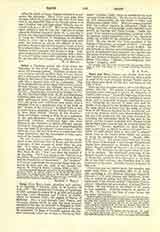

Caius, a Christian author who lived about the beginning of the third century. Little is known about his personal history. Eusebius mentions him several times and tells us (Hist. Eccl., VI, xx), that he held a disputation with Proclus, a Montanist leader at Rome in the time of Pope Zephyrinus (199-217), and calls him a learned man and an ecclesiastic. This latter designation need not imply that he was a priest. Several extracts from the dialogue against Proclus are given by Eusebius (Hist. Eccl., II, xxv; III, xx xi; VI, xx). Caius is also mentioned by Jerome (de Vir. Ill., 59), Theodoret (Hoer. Fab., II, iii), and Nicephorus Callistus (Hist. Eccl., IV, xii-xx), all of whom derived their information from Eusebius. Photius (Bibl. Cod., 48) gives some additional data drawn from a marginal note in a manuscript copy of the work on the “Nature of the Universe” in which Caius is said to have been a presbyter of the Roman Church and to have been elected “Bishop of the Gentiles“. These indications, resting as they do on a confusion of the Anti-Montanist Caius with Hippolytus, are absolutely valueless. Additional light has been thrown on the character of Caius’s dialogue against Proclus by Gwynne’s publication of some fragments from the work of Hippolytus “Contra Caium” (Hermathena, VI, p. 397 sq); from these it seems clear that Caius maintained that the Apocalypse of John was a work of the Gnostic Cerinthus.
We owe to Caius a very valuable evidence of the death of Sts. Peter and Paul at Rome, and the public veneration of their remains at Rome about the year 200. It is taken from the above-mentioned disputation with Proclus, and reads as follows (Euseb., Hist. Eccl., II, 25): “But I can show the trophies of the Apostles. For if you will go to the Vatican or to the Ostian Way you will find the trophies of those who laid the foundations of this church”. By “trophies” is of course understood the memorial chapel that preserved in each case the body of the Apostle (cf, Barnes, St. Peter in Rome, London, 1900, p 145).
PATRICK J. HEALY

